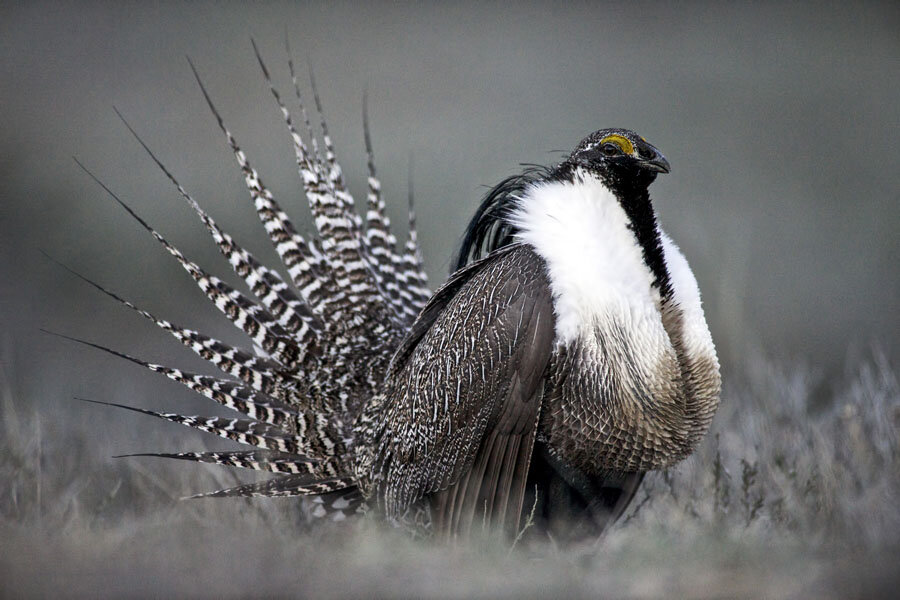Sage grouse habitat: Burned and cheated?
Loading...
A bird that once numbered in the millions is down to a few hundred thousand survivors – and now their homes are on fire.
Greater sage grouse now have an estimated population of 200,000 to 500,000, according to the National Audubon Society. Officials will decide by the end of the month whether to legally designate the birds as endangered.
"If the current trends of wildfire continue unabated, then our models predict substantial decline of sage grouse," says Peter Coates, a research wildlife biologist with the US Geological Survey, in an interview. Specifically, he and his colleagues predict a 50 percent population decline by 2040.
Along with human encroachment on their native habitat, the chief reason for the grouse's decline is the combination of increased wildfires and invasive cheatgrass.
Cheatgrass burns easily so it encourages wildfires to spread, burning up the sagebrush that the grouse depend on. The cheatgrass is able to grow back quickly after the fire, and elbows out sagebrush in the process.
"Wildfire is an important process to healthy sagebrush ecosystems. However, cheatgrass can change this dynamic and lead to permanent loss of sagebrush," says Dr. Coates.
"Cheatgrass and wildfire are in a positive feedback loop, where cheatgrass promotes increased fire size and frequency leading to additional loss of sagebrush and propagation of cheatgrass," explains Coates. Ultimately, "areas may experience a state transition to cheatgrass as the dominant vegetation, rather than sagebrush.”
That's a problem for the chicken-sized birds, who "cannot survive without sagebrush," said Brad Jessop, a natural resource specialist with the Bureau of Land Management (BLM) in Salt Lake City, to NBC News. Coates explains, "They use multiple components of the ecosystem for their multiple life stages.... If one of those components is lost, then their population declines."
This funny-looking bird has gained a cult following for its flashy mating dance on YouTube, where videos of the routine have garnered hundreds of thousands of views.
But sage grouse survival needs more than a viral video, experts say.
"The sage grouse is an umbrella species," says Coates. "It captures many of the life histories and biodiversity across the sage brush ecosystem in general."
So if the sage grouse are hurting, experts are confident the rest of the ecosystem is in trouble as well. But action to help the sage grouse has been controversial.
The US Fish and Wildlife Service faces a court-ordered Sept. 30 deadline to decide whether the sage grouse warrants protection under the Endangered Species Act.
"I remain optimistic that they might not receive the 'endangered' designation," Interior Secretary Sally Jewel said Tuesday at a breakfast hosted by The Christian Science Monitor.
If listed, the act would prevent any further disruption of sage grouse habitat, which the BLM has calculated could cost the US more than $5.6 billion through forgone land resources, including oil and gas drilling.





